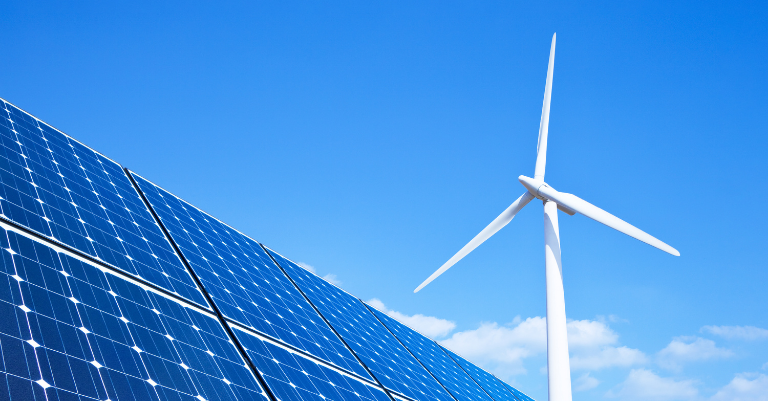
That is evidenced by the growing number of major global operators establishing and enhancing their presence in Queensland. The investment opportunities in Queensland’s flourishing renewables and green hydrogen sectors are abundant and readily available.
Nurturing the ecosystem
Green hydrogen is the clean fuel of the future and Queensland is preparing for it today.
Key to a sustainable and scalable green hydrogen industry is a reliable and plentiful supply of energy from renewable sources.
With more than 300 days of sunshine a year and some of the best wind resources in Australia, Queensland possesses the natural resources that make it an ideal location for large-scale photovoltaic solar array and wind farm facilities.
With 34 large-scale renewables sites already in operation and another 14 under construction or at final investment decision, Queensland has the infrastructure in place to support the establishment of a world-leading green hydrogen industry.
Queensland is committed to building a complete green hydrogen ecosystem – including energy generation, production, export, domestic demand, and downstream opportunities such as manufacturing and assembly.
The strength and holistic nature of the Queensland Government’s approach to establishing the state’s green hydrogen industry is outlined in the Queensland Hydrogen Industry Strategy 2019-2024.
International destination
Queensland’s advantages in natural resources, existing energy expertise and infrastructure, and pro-business environment mean that the state is already welcoming leading energy companies.
Fortescue Future Industries (FFI) has chosen Gladstone, Queensland as the home of its Global Green Energy Manufacturing Centre – Australia’s first multi-gigawatt-scale electrolyser factory. The company also plans to host its first Vocational Training and Employment centre at the site, ensuring that Queensland continues to have the best talent in renewables and green hydrogen.
Queensland’s close proximity to Asia-Pacific, means that leading corporations from markets in the region are already partnering with Queensland-based companies on innovative hydrogen projects.
This includes ENEOS’ green hydrogen production facility at Bulwer Island, near Brisbane. Currently producing up to 20 kilograms of hydrogen daily, the project was the first to be supported by the Japanese Government’s $24 billion Green Innovation Fund.
The green hydrogen from Bulwer Island is then transported to Japan and will help the country achieve its target of carbon neutrality by 2050.
Major Japanese companies are also involved in the emerging green hydrogen ecosystem at Gladstone – this includes Sumitomo Corporation working with Rio Tinto to establish a pilot production plant, and Iwatani Corporation’s partnership with the publicly-owned Stanwell to deliver a proposed 3,000MW electrolysis facility.
Another renowned Japanese company, Sojitz Corporation, is partnering with Nippon Engineering Consultants and Queensland Government-owned CS Energy on a demonstration project to deliver green hydrogen from Queensland to Palau.
The goal of the project is to demonstrate the viability of manufacturing and transporting low-cost green hydrogen and also help the island nation with its transition to carbon-neutral energy sources.
The factors, including incentives, attracting these and other leading international companies to invest in and support Queensland’s fast growing green hydrogen industry are detailed in Trade and Investment Queensland’s Hydrogen Prospectus.